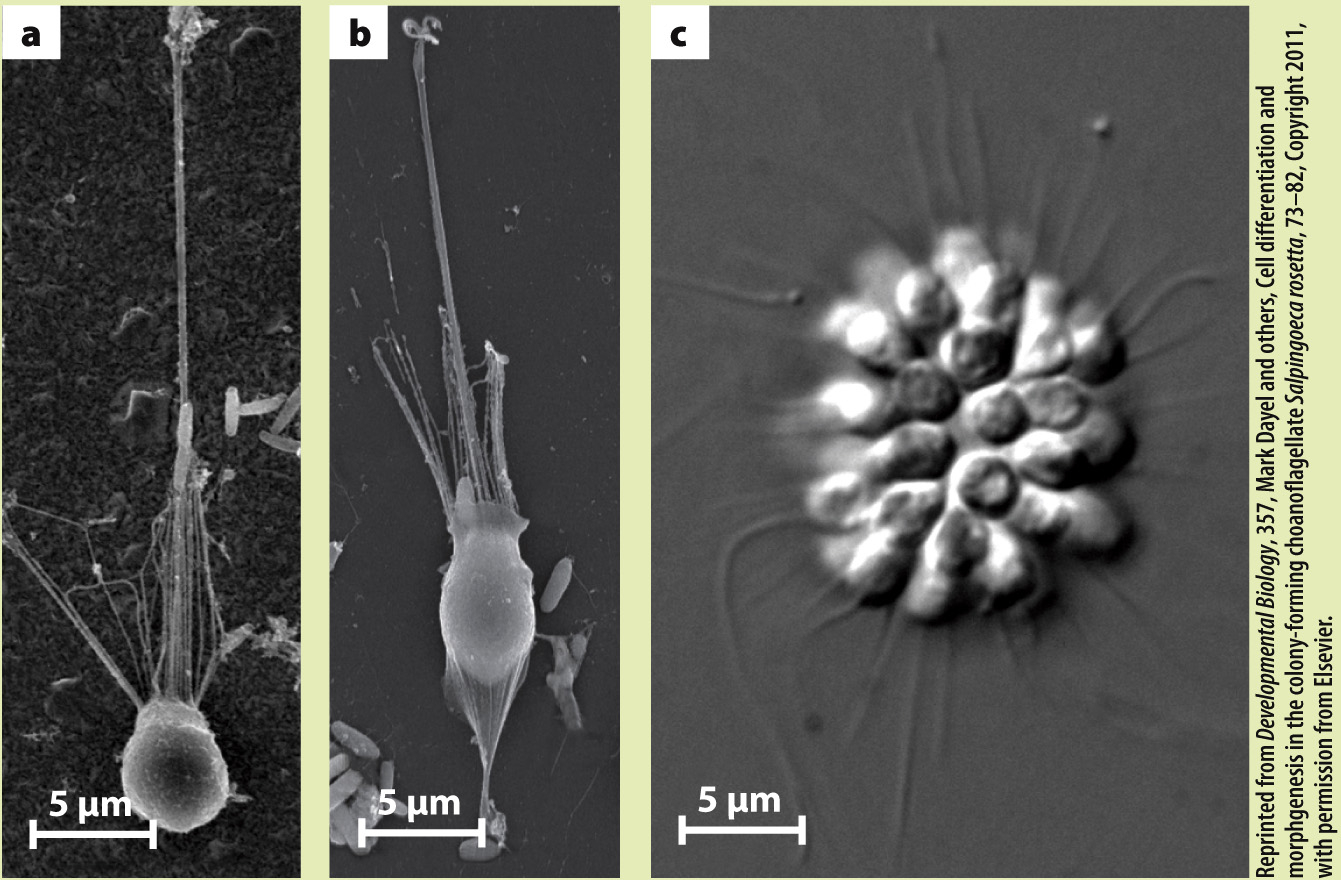How did animal cell adhesion originate?
The genome of the choanoflagellate Monosiga brevicollis provides fascinating insight into the evolution of cell adhesion molecules. Choanoflagellates, the closest protistan relatives of animals, are unicellular microorganisms. Therefore, it came as a surprise that the genes of M. brevicollis code for many of the same protein families that promote cell adhesion in animals. The choanoflagellate genome contains genes for both cadherin and integrin proteins. Clearly, these proteins are not supporting epithelia in M. brevicollis, so what are they doing?
One approach to an answer came from the observation that cells stick not only to one another but also to rock or sediment surfaces. Proteins that originally evolved to promote adhesion of individual cells to sand grains or a rock surface may have been modified during evolution for cell–
An intriguing clue to the role of these proteins in choanoflagellates comes from careful laboratory studies (Fig. 28.7). Although choanoflagellates are unicellular, simple multicellular structures can be induced in a number of species. Molecular signals induce some choanoflagellates to form a novel multicellular structure, and, unexpectedly, the source of these signals is a bacterium, the preferred prey of the choanoflagellates. The function of the multicellular structures in these choanoflagellates has not yet been determined, but these observations support the hypothesis that they aid predation.
HOW DO WE KNOW?
FIG. 28.7
How do bacteria influence the life cycles of choanoflagellates?
BACKGROUND Choanoflagellates are the closest protistan relatives of animals. Cell adhesion, cell differentiation, and multicellularity in these organisms are being studied to increase our understanding of early events in the evolution of animal multicellularity. Nicole King and her colleagues cultured the choanoflagellate species Salpingoeca rosetta in the laboratory. High-
HYPOTHESIS The bacterium Algoriphagus machipongonesis induces the choanoflagellate to form rosette-
EXPERIMENT The scientists grew the choanoflagellates in a medium containing only A. machipongonesis, as well as in media without this prey bacterium.

RESULTS The multicellular state formed only when A. machipongonesis was present (Fig. 28.7c).
CONCLUSION Choanoflagellates differentiate several cell types upon cues from the environment. In particular, molecular signals from prey bacteria can induce a simple form of multicellularity. The direct ancestors of animals may have gained simple multicellularity by a similar route.
FOLLOW-
SOURCE Dayel, M., et al. 2011. “Cell Differentiation and Morphogenesis in the Colony-
To date, cadherins have been found only in choanoflagellates and animals, but proteins of the integrin complex extend even deeper into eukaryotic phylogeny—